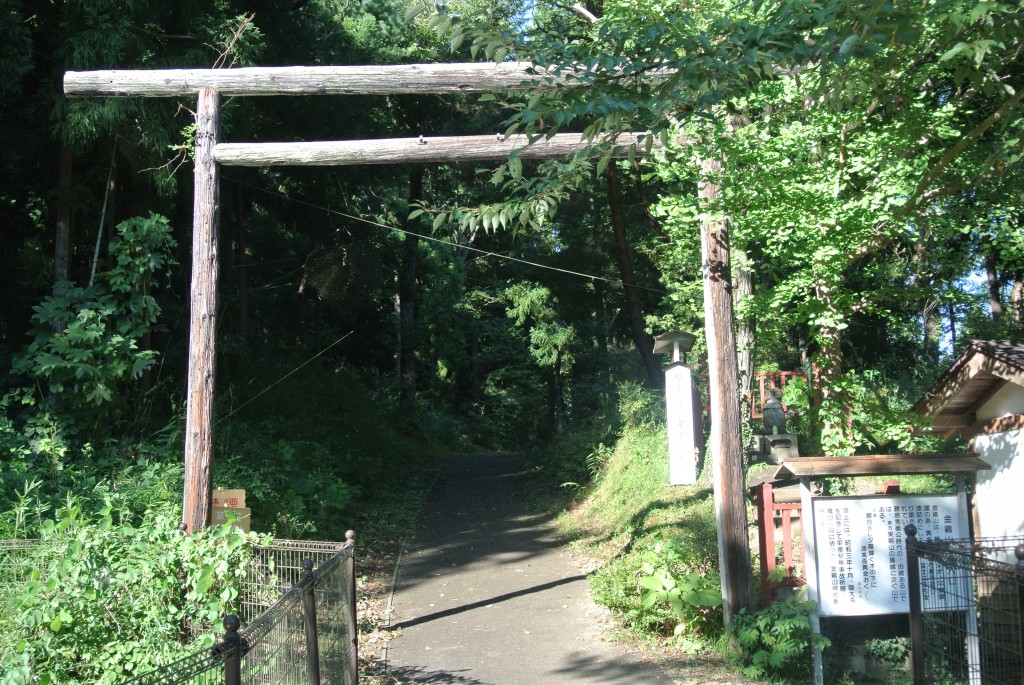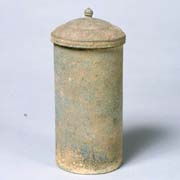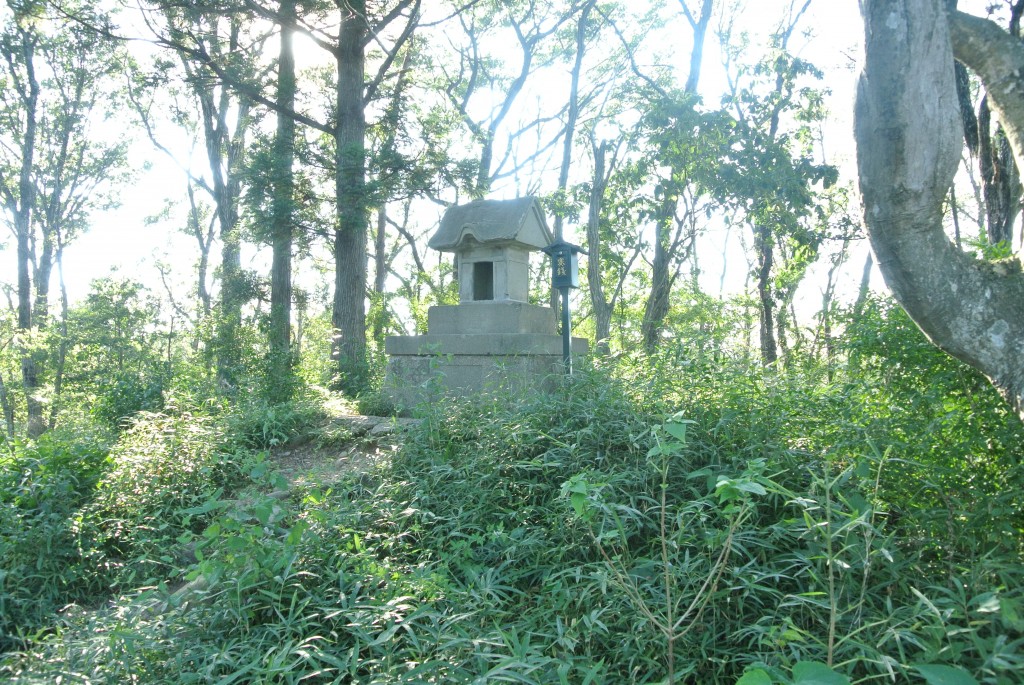
Entrance to Mt Kinkeisan. The grave of Yoshitsune's wife and children stands to the right of the torii.
Tiny Mt Kinkei is a sacred mount and a World Heritage Site. Yet it’s only 96 meters tall and barely noticeable on the Hiraizumi skyline. So why is it so special?
In The Sacred and the Profane, Mircea Eliade writes of the importance of the link between Heaven and Earth, and how the true world is always at the centre – right here, right now. The axis mondi can be erected anywhere and represented by a tree, a mountain, a pole. As the tallest structures on earth, mountains come closest to touching heaven and are therefore often privileged for their sacred quality. For the Pure Land community of Hiraizumi, Mt Kinkei was their sacred focal point.

A sutra container (courtesy of Tokyo National Museum). Sutras were buried so as to preserve them during the age of Mappo, when it was thought teaching would be corrupted.
Mythology grew up around the hill, the most ancient legend being that a golden chicken had been buried as an offering at its summit (hence the name Kin -gold, kei – chicken or cockerel). There were also mounds where Buddhist sutras were buried, and a container made of copper was unearthed in excavations and is displayed at the Tokyo National Museum.
At least one of Hiraizumi’s buildings was purposely aligned to the hill, that being a villa-temple at Muryoku-in. Twice a year the sun sets just behind Kinkeisan, setting it ablaze with colours.
When Basho visited Hiraizumi in ‘The Narrow Road to the Deep North’, he found most of the sites in ruins but the hill remained intact. “I came upon Lord Hidehira’s mansion, which had been utterly reduced to rice-paddies. Mount Kinkeisan alone retained its original shape,” he wrote. It still stands untouched today, away from the bustle of tourists and quietly neglected. When I visited, a lone cicada sang plaintively in the lingering summer heat.


Leave a Reply